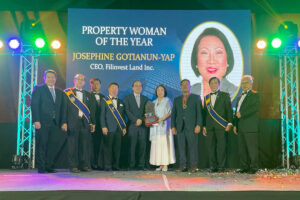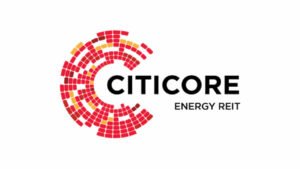A closer look at the Maharlika fund

I am pleased to share with readers a post we released to Globalsource Partners subscribers (globalsourcepartners.com) on Dec. 14 on the Maharlika Wealth Fund. I end with a postscript — a recommendation to address concerns of the critics on its governance.
Last Friday (Dec. 9 – Ed.), after over a week of intense public debate about the rationale and source of funds of a congressional initiative to set up a sovereign wealth fund, Finance Secretary Benjamin Diokno stepped up to own the proposal. In a press briefing, he read a statement signed by the core members of the economic team strongly endorsing the creation of the Maharlika Wealth Fund (MWF) as a vehicle to help achieve the medium-term economic objectives of the administration.
But beyond showing legislative-executive cooperation in this particular instance, the finance secretary failed to provide what critics of the MWF have been looking for: a clear Exposition of first principles, defining what the problem is, why current institutions are not up to the task and how the MWF will fill in the gap. Rather the statement was uncharacteristically vague, suggesting in part that the MWF would enhance. Fiscal space, increase investments in development projects while offering improved risk-reward trade-offs.
Following the economic managers’ embrace of the proposal, the draft bill was further tweaked with congressional proponents deciding to label it an investment rather than a wealth fund. The name change is noteworthy as it reflects the public’s rejection of the original concept of tapping the BSP’s (Bangko Sentral ng Pilipinas) foreign reserves and the two pension funds’ assets as sources of capital. It ought to be a recognition as well that the funds involved are not surplus monies in search of higher yields but are scarce resources that have competing uses in the short to medium-term.
SOURCES OF FUNDSUnder the latest draft bill, the major source of capital for the Maharlika Investment Fund (MIF) are the two government banks, Landbank of the Philippines (LBP) and Development Bank of the Philippines (DBP), and the Bangko Sentral ng Pilipinas (BSP). The first red flag is that all three have histories of government bailouts and recapitalizations.
In the case of the LBP and the DBP, both banks are already performing developmental lending of the kind that the MIF is envisioned to go into. This raises the basic question of what added value the MIF, a startup with no track record, can bring to the table in the short to medium-term. The second question has to do with their more immediate role in government’s pandemic recovery program. Under the proposal, both banks are asked to chip in P50 billion each. The combined P100 billion is almost double the P53.3 billion capital infusion of the previous administration in the two institutions, a large portion of which was added lately to enable them to implement pandemic recovery leading programs.
The third question has to do with the size of their contributions. For LBP, the amount represents close to 25% of its net worth which just meets the prudential cap for bank investment in a single enterprise. For DBP, which asset-wise is less than half the size of LBP, P50 billion is about two-thirds of its net worth, quite a high concentration of risk in a single investment. Thus, not only does the mandate to capitalize the MIF expose the banks to an unfamiliar risk will be difficult to manage thus weakening their financial condition, it also increases the odds of more capital calls on the national government down the road. Considering the high likelihood of the latter, directly budgeting the amounts in the annual appropriations would be more in keeping with fiscal transparency.
The case of the BSP is somewhat more complicated with the MIF intending to tap only declared dividends; but the plan similarly raises red flags. Under the BSP charter, dividends declared, representing 50% of its profits, are remitted to the Treasury. The Treasury then turns around and give the amount back to the BSP in the form of national government contribution to build up its capital over time, i.e., from P50 billion currently to the target P200 billion. The draft bill seeks to amend this provision by directing the BSP to send those dividends, in whole or in part following a set schedule, to the MIF. Thus, creating the MIF would be at the expense of fully capitalizing the BSP at the soonest possible time, a delay that may be defensible if push comes to shove but seems unwise at the present time given all the economic and financial uncertainties, global and local.
However, there is the separate issue of trying to rope in the BSP as part of the formal governance structure of the MIF. Lay persons like us are inclined to take the view that those dividends belong to the national government (since it was the national government that capitalized the BSP) and that the BSP need not have any role or responsibility in the MIF itself. However, framers of the MIF seem to prefer to consider those dividends as belonging to the BSP rather than the national government. The danger here is saddling the BSP anew with quasi-fiscal functions that could interfere with its primary monetary policy setting role and, over time, erode its credibility and independence. The resources of the old central bank were similarly deployed in expansive developmental work that contributed to its eventual bankruptcy.
USES OF FUNDSThe economic managers’ statement suggests that the MIF will drive strategically important investments in the country, funding “big ticket infrastructure projects, high-return green and blue projects, and country development, including agriculture.” This raises a whole slew of issues related to government trying to pick winners and brings to mind the failed experience of the National Development Co. (NDC). Over the course of its over 100-year history, this investment arm of the government ventured into a diverse range of pioneering commercial, industrial, mining, and agriculture enterprises, including several of the so-called 11 major national projects, whose foreign debts were guaranteed by government financial institutions that eventually had to be recapitalized and rehabilitated. This misadventure contributed majorly to the Philippines being the only Asian country that fell into the 1980s Latin American debt crisis.
The implicit assumption that the MIF, by its sheer size, will do better than the contributing institutions in terms of investment returns goes against the NDC experience. Even more worrisome, we have not seen supporting studies that spell out the MIF’s basic investment strategy or identify prospective high-yielding economically and financially superior projects nor any financial plan that maps out recoverability of the proposed high overhead costs. The excessive hype about potential high investment returns is without reference to the (at least equal) probability of potential huge losses. Thus, despite recent tweaking of the proposal, including replacing the President with the finance secretary as chairman of the board, the lack of complete staff work and the rush in congress to pass the bill makes brushing aside suspicions of political motivations and future interference impossible.
THE IMMEDIATE RISKSClearly, the economic managers’ endorsement of the MIF is intended to lend it credibility. Yet, the business sector, civil society, the academe, and the public in general continue to oppose it. For now, with the President openly supporting its creation, the Speaker of the House of Representatives, a cousin of the President, is still actively pushing for the quick passage of the proposed bill. Despite the high odds of the measure passing the lower house, it will likely face rougher sailing in the Senate which usually does more thorough research, analysis and deliberation.
The hope now is that having owned the proposal, the economic managers could prevail upon the proponents of the MIF to give more time for the necessary background work to be done that would also benefit from wider consultations with experts in the field. The President’s chief legal counsel, the influential 98-year-old former defense secretary of his father, has likewise cautioned the President to study the proposal carefully.
The fear is that pushing forward and insisting on the proposal in its current form, which as we said add to Philippine financial and fiscal risks, may negatively affect investors’ perception of the country’s sovereign risk and hamper fiscal consolidation efforts. At a minimum, it distracts economic managers from attending to more urgent and critical matters that affect short to medium-term economic growth. In the event, the collateral damage to the economic team’s credibility, including in their relationship with the President who is losing political capital on the issue, may lead to possible changes in the composition of the economic team, not necessarily for the better.
A POSTCRIPT:A straightforward way to address the governance concerns of critics is for government to own under 50% of the shareholdings, with the balance to be subscribed by multilateral organizations (the Asian Development Bank or ADB, the International Finance Corp. or IFC, Asian Infrastructure Investment Bank or AIIB) and private investors. For example: 40% Republic of the Philippines, 20% ADB, 20% IFC, 20% private sector. By attracting other investors, they can multiply the size of what is now just a P100-billion fund. If co-investors are not attracted to join, then perhaps government should re-think whether this is truly as remunerative and developmental as its proponents represent?
Romeo L. Bernardo was finance undersecretary from 1990-1996. He is a trustee/director of the Foundation for Economic Freedom, the Management Association of the Philippines, and the FINEX Foundation. He also serves as a board director in leading companies in banking and financial services, telecommunication, energy, food and beverage, education, real estate, and others.




